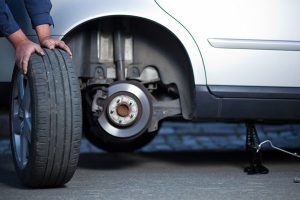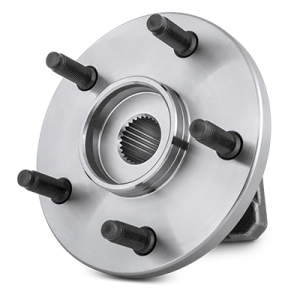Improper wheel installation is one of the most overlooked causes of premature wear in wheel hubs and bearings. Mistakes like incorrect torque, uneven tightening, or dirty wheel studs may seem minor, but they often lead to significant mechanical issues, including vibration, noise, reduced lifespan, and even wheel detachment. This article explains how poor mounting affects hub and bearing health and how to avoid these costly errors.
Why Proper Wheel Installation Matters

Wheel hub assemblies and bearings are precision-engineered components. They operate under specific preload, alignment, and torque conditions. Any deviation during wheel installation can lead to:
-
Uneven clamping force
-
Bearing overload or underload
-
Distorted hub flanges
-
Excessive heat or friction
-
Dangerous handling issues
Improper installation is a leading contributor to early bearing failure and wheel-end vibration.
Common Wheel Installation Errors and Their Effects
| Installation Error | Impact on Hub/Bearing Health | Symptoms |
|---|---|---|
| Under-torqued lug nuts | Loose wheel, excessive movement | Clunking, vibration |
| Over-torqued lug nuts | Crushed bearing races, hub warping | Noise, bearing failure |
| Uneven torque | Warped hub flange, uneven pressure | Vibration, uneven brake pad wear |
| Cross-threaded or dirty studs | Poor clamping, damage to threads | Nut slippage, unsafe installation |
| Skipped re-torque after mileage | Loosened wheels due to heat cycling | Gradual loosening, vibration |
Understanding Torque and Bearing Preload
Correct torque application is essential for setting proper bearing preload. Over-torquing compresses the bearing assembly too much, increasing internal friction. Under-torquing allows excess play, leading to uneven loading and accelerated wear.
Steps for proper torque application:
-
Use a calibrated torque wrench.
-
Clean all studs and nut surfaces.
-
Apply torque in stages (e.g., 50%, 75%, 100%).
-
Always follow manufacturer torque specs (typically 100–140 Nm for passenger vehicles).
-
Re-check torque after 50–100 km of driving.
How Improper Installation Leads to Hub Damage
Incorrect installation does more than harm bearings — it affects the entire hub assembly. Issues include:
| Problem | Long-Term Result |
|---|---|
| Warped hub flange | Poor rotor alignment, braking vibration |
| Increased runout | Uneven brake wear, steering shake |
| Damaged wheel studs | Insecure mounting, potential wheel loss |
| Seal failure due to heat | Water/dust intrusion, bearing contamination |
Maintenance and Inspection Tips
To identify issues caused by improper wheel installation:
-
Check for excessive bearing play during routine maintenance.
-
Inspect for visible rust or wear around the hub flange.
-
Spin the wheel and listen for grinding or roughness.
-
Monitor for abnormal heat at the hub after a drive.
-
Use a dial indicator to measure wheel runout if vibration is present.
| Inspection Point | Recommended Interval |
|---|---|
| Torque check | After any wheel removal/fitment |
| Bearing inspection | Every 15,000–20,000 km |
| Hub surface cleaning | Before every wheel installation |
| Wheel runout check | If vibration or brake pulsation |
Best Practices for Installation
To prevent installation-related bearing or hub failures:
-
Always follow correct tightening sequence (crisscross/star pattern).
-
Avoid using impact wrenches for final tightening.
-
Replace damaged or stretched wheel studs immediately.
-
Never apply grease or anti-seize to wheel studs unless specified.
-
Re-torque after the vehicle has cooled from driving.
When to Replace Hubs and Bearings

Improper installation accelerates wear, and ignoring the symptoms can lead to complete failure. Consider replacement if you notice:
-
Persistent humming, grinding, or squealing from the wheels
-
Wheel wobble or loose feeling in steering
-
Uneven or accelerated tire wear
-
Heat emanating from the wheel hub after short drives
-
ABS system faults related to wheel speed sensors
Always replace hubs and bearings with components designed to meet or exceed OEM specifications.
Buy Hub & Bearings online
This store offers a wide selection of high-quality hub assemblies and bearing kits matched to your vehicle. Use their compatibility checker for a perfect fit, whether you’re repairing damage or upgrading to more durable components.
Final Thoughts
Improper wheel installation can quietly damage your hub and bearing systems over time. Simple errors — like incorrect torque or uneven tightening — cause major consequences ranging from vibration to complete failure. By following proper installation techniques, using the right tools, and inspecting your components regularly, you can dramatically extend the life of your vehicle’s wheel assemblies.
Need replacement parts?
Buy Hub & Bearings online and get quality parts designed to restore your vehicle’s handling, safety, and comfort.